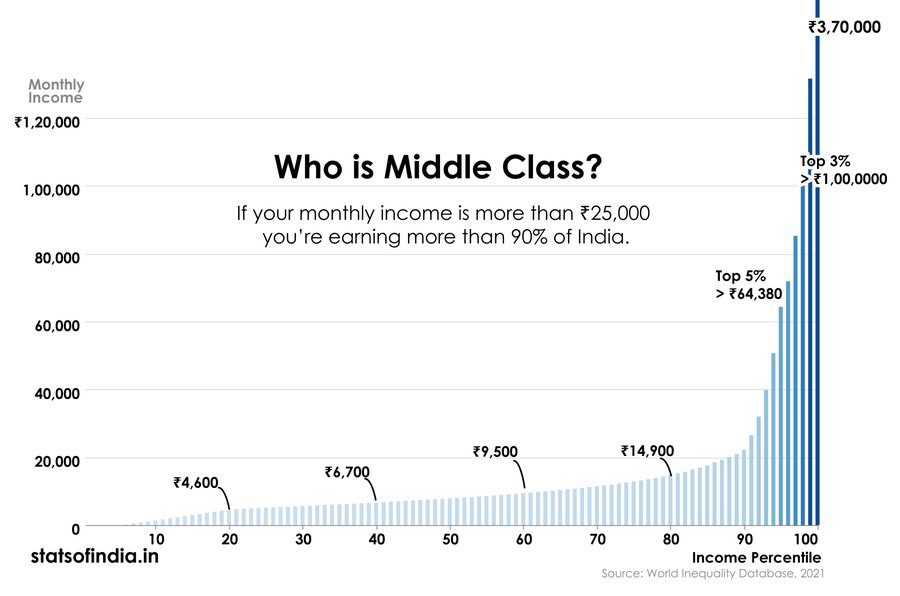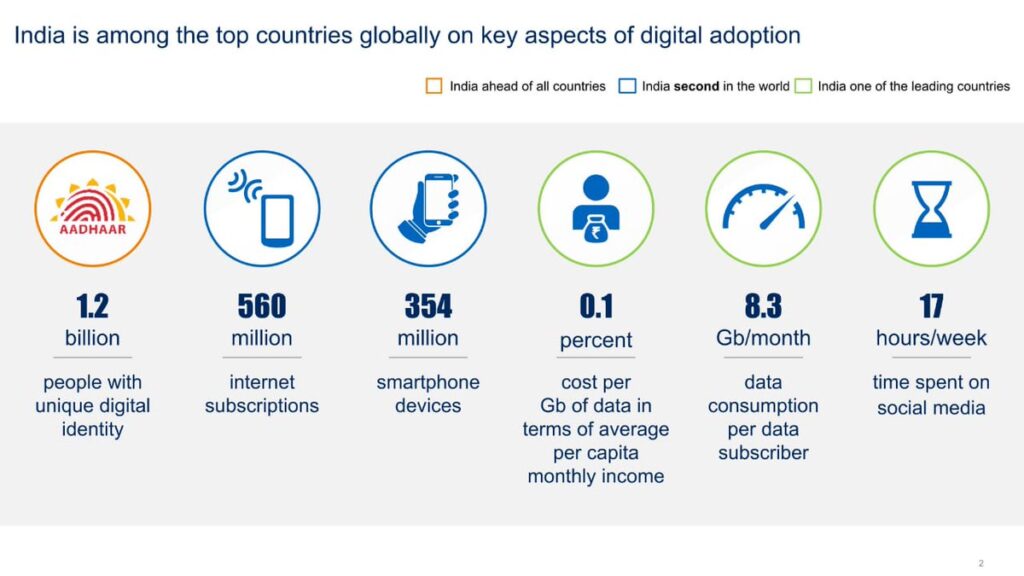India’s economic journey over the past decade has been nothing short of a remarkable, characterized by robust growth and transformative changes. This progress has solidified India’s position as one of the world’s fastest-growing economies, attracting attention and admiration from global economic analysts and investors.
The prospect of India becoming the world’s second-largest economy by 2075 has captured the attention of experts worldwide. According to projections by Goldman Sachs, India is poised to outpace not only Japan and Germany but also the current global economic powerhouse, the United States. At present, India ranks as the world’s fifth-largest economy, standing behind Germany, Japan, China, and the U.S.
The foundation for India’s economic prowess lies in the impressive growth and transformation it has experienced over the past decade. The nation’s economy has displayed resilience, adaptability, and a determination to embrace change. This has led to a period of sustained expansion, propelling India to the forefront of emerging markets.
As we set our sights on the future, India’s economic prospects shine brightly, driven by a confluence of key trends that hold the potential to shape the nation’s growth trajectory for decades to come. In this article, we will delve into these pivotal factors and conduct a thorough analysis, drawing upon recent research to present a comprehensive outlook of India’s economic future.
The Rise of the Middle Class
India boasts the world’s largest middle-class population, and this segment is expected to witness significant growth in the coming years. As the middle class expands, so does its purchasing power, leading to increased demand for goods and services. This burgeoning consumer base is likely to drive economic growth, stimulate domestic consumption, and fuel investments in various sectors.

According to the World Economic Forum, India’s middle class is projected to reach 475 million people by 2030, offering immense opportunities for businesses and entrepreneurs to cater to this evolving market.
The Growth of the Digital Economy
India has emerged as a global leader in digital adoption and innovation. The rapid growth of the digital economy has been facilitated by the government’s ambitious Digital India initiative, which aims to empower citizens with digital access and create a knowledge-based economy.

The ‘India’s Trillion-Dollar Digital Economy’ report by the Ministry for Electronics and Information Technology reveals that India’s digital economy is set to soar to $1 trillion by 2025, compared to its current value of around $200 billion. This growth will be fueled by new digital ecosystems in sectors like financial services, agriculture, healthcare, logistics, and more.
Technological Innovation
Playing a pivotal role in spearheading India’s economic trajectory is the nation’s impressive progress in technology and innovation. This development has not gone unnoticed, with an investment bank acknowledging its significance in shaping India’s economic landscape. As India’s technological prowess continues to advance, it is poised to unlock new opportunities and drive growth across multiple sectors.
According to a report by Nasscom, India’s nongovernmental trade association, the technology industry is set to experience a substantial boost, with revenue projected to increase by an astounding $245 billion by the end of 2023. This anticipated surge is a testament to India’s unwavering commitment to fostering a thriving digital ecosystem.
Infrastructure Development
Recognizing the pivotal role of robust infrastructure in fostering economic growth and development, the Indian government has embarked on a path of substantial investment in critical infrastructure projects. The vision is to create a modern and efficient network of roads, railways, airports, and other essential facilities that will lay the foundation for India’s progress in the 21st century. These transformative initiatives are driven by a commitment to enhance connectivity, reduce logistics costs, and create an attractive investment climate for both domestic and foreign stakeholders.
Investments in infrastructure have long been acknowledged as a catalyst for economic expansion. As India forges ahead with ambitious plans to modernize its transport and logistics systems, it is projected that the country’s GDP growth could receive a significant boost of around 2.5% annually, according to estimates by the World Bank. This infusion of infrastructure investments is poised to unleash a wave of economic activity across various sectors, unleashing untapped potential and creating new opportunities for businesses and individuals alike.
Furthermore, modern infrastructure fosters innovation and entrepreneurship. As transportation and communication become more efficient, it enables the seamless flow of ideas and information. This accelerates the pace of innovation, facilitating the exchange of knowledge and the creation of new solutions to address societal challenges. With a well-connected and accessible environment, entrepreneurs and startups are better equipped to thrive and contribute to India’s economic growth and technological advancement.
Skilling and Human Capital Development
India’s demographic dividend, heralded by a youthful and dynamic workforce, presents a promising asset for the nation’s economic growth and development. However, to fully harness the potential of this valuable demographic, strategic investments in skill development and education are paramount.
The Skill India initiative stands as a cornerstone of the nation’s efforts to capitalize on the demographic dividend. This visionary program aims to bridge the gap between skills required by industries and the existing skill sets of the workforce. Through training and upskilling programs, Skill India seeks to enhance the employability of individuals and align their skills with the evolving needs of the job market.
Investments in skill development not only benefit individuals seeking employment but also hold significant advantages for businesses and the overall economy. A well-skilled workforce attracts investments from both domestic and international companies, seeking a talent pool capable of driving innovation and productivity. A workforce equipped with the latest skills ensures that businesses can stay competitive on a global scale and contribute to economic growth and prosperity.
Sustainable Development and Green Initiatives
India’s commitment to sustainable development and environmental preservation is evident through its proactive efforts to reduce its carbon footprint. The nation has set ambitious targets for renewable energy capacity, signifying its dedication to embracing clean and eco-friendly practices. This strong stance in addressing climate change is positioning India as a global leader in sustainable development.
As part of its green initiatives, India is investing heavily in renewable energy sources such as solar, wind, and hydro power. The government’s Renewable Energy Policy aims to achieve 450 gigawatts (GW) of renewable energy capacity by 2030, signaling a significant shift towards clean and sustainable power generation. This transition away from fossil fuels not only curbs greenhouse gas emissions but also reduces the nation’s dependency on non-renewable resources.
Moreover, the transition towards renewable energy sources opens up exciting new economic opportunities in green sectors and sustainable industries. The renewable energy sector itself becomes a hub for job creation and technological innovation. India’s commitment to renewable energy is driving investments and attracting international collaborations, fostering economic growth in this promising industry.
In conclusion, India’s economic landscape has witnessed phenomenal growth and transformation over the past decade, propelling it to the forefront of emerging economies. As we gaze into the future, the nation’s economic prospects appear bright, fueled by pivotal trends that will shape its growth trajectory. India’s journey towards becoming the world’s second-largest economy by 2075 is not merely a vision but a well-grounded projection, drawing upon its resilience, dynamism, and the strategic pursuit of growth.
With concerted efforts from all stakeholders, India is well-positioned to capitalize on these trends and chart a course towards unparalleled economic prosperity. As the nation moves forward, it will continue to inspire and shape the global economic landscape.








